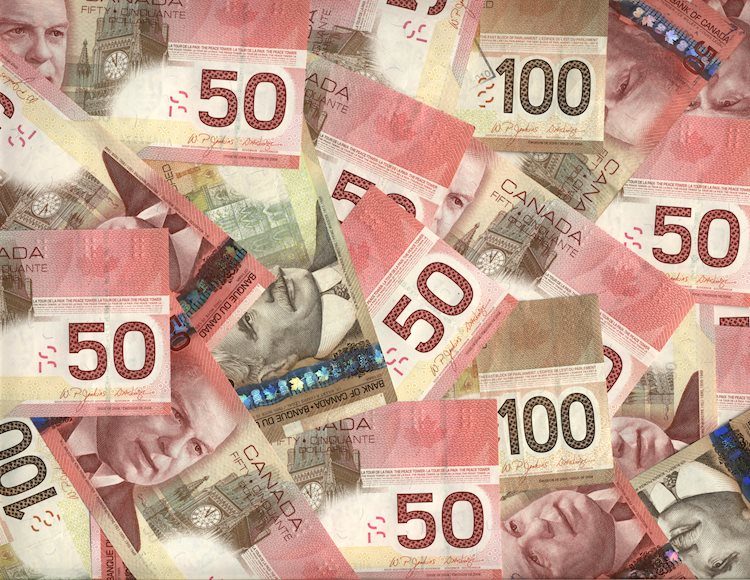- The US economy remains robust with strong GDP and personal consumption expectations.
- The Bank of Canada is expected to cut interest rates again by 50 bps in December due to concerns about economic growth.
- US data might move the pair this week.
The USD/CAD pair moved higher on Monday as positive sentiment toward the US Dollar prevailed. The pair rose to a high above 1.3900, which was the highest level since November 11. The strength of the US Dollar is being supported by the expectations that the Federal Reserve (Fed) might not opt into aggressive easing. Meanwhile, the Bank of Canada (BOC) is expected to cut interest rates again in December due to concerns about economic growth.
The Canadian Dollar remains vulnerable due to expectations that the BoC will maintain its aggressive policy-easing stance at its upcoming December meeting. This comes in the wake of the BoC’s recent 50-basis-point (bps) rate cut, its fourth consecutive reduction but the largest in size.
Daily digest market movers: Canadian Dollar recedes as US economic resilience pushes the USD higher
- The US economy is performing well. A Q3 GDP growth forecast of 3.0% SAAR matches Q2, and personal consumption at 3.2% SAAR surpasses Q2’s 2.8% according to the GDPNow tracker.
- The Atlanta Fed’s GDPNow model predicts a higher Q3 growth of 3.3% SAAR, with the final update expected on Tuesday and Q4’s forecast coming Thursday.
- The New York Fed’s Nowcast model estimates Q3 growth at 2.9% SAAR and Q4 at 2.5% SAAR, with its Q4 forecast to be updated on Friday and Q1 2025 forecast coming in late November.
- Consensus anticipates a rise in ISM Manufacturing PMI to 47.6 in October, supported by the recent increase in S&P Global US Manufacturing PMI to a two-month high of 47.8.
- In addition, Friday’s labor market data will be closely watched, including a Nonfarm Payroll and Unemployment reading.
- Meanwhile, markets continue to bet on two Federal Reserve cuts by the end of 2024.
- BoC cut interest rates by 50 basis points to 3.75% last Wednesday, larger than the usual 25 bps.
- Economists predict another 50 bps cut from the BoC in December due to downside risks to Canadian economic growth.
USD/CAD technical outlook: Bullish momentum remains, RSI and MACD flash overbought signals
The Relative Strength Index (RSI) for the currently stands at 74, indicating the pair is in overbought territory. The RSI is also showing a mildly rising slope, suggesting that buying pressure is rising.
The Moving Average Convergence Divergence (MACD) is also showing a bullish outlook with the histogram rising and green. This suggests that buying pressure is building and that the overall outlook for the pair remains positive. However, the overbought nature of these signals opens the door for a correction. The USD/CAD should find support between the 1.3800 and 1.3900 levels before the next bullish run.
Canadian Dollar FAQs
The key factors driving the Canadian Dollar (CAD) are the level of interest rates set by the Bank of Canada (BoC), the price of Oil, Canada’s largest export, the health of its economy, inflation and the Trade Balance, which is the difference between the value of Canada’s exports versus its imports. Other factors include market sentiment – whether investors are taking on more risky assets (risk-on) or seeking safe-havens (risk-off) – with risk-on being CAD-positive. As its largest trading partner, the health of the US economy is also a key factor influencing the Canadian Dollar.
The Bank of Canada (BoC) has a significant influence on the Canadian Dollar by setting the level of interest rates that banks can lend to one another. This influences the level of interest rates for everyone. The main goal of the BoC is to maintain inflation at 1-3% by adjusting interest rates up or down. Relatively higher interest rates tend to be positive for the CAD. The Bank of Canada can also use quantitative easing and tightening to influence credit conditions, with the former CAD-negative and the latter CAD-positive.
The price of Oil is a key factor impacting the value of the Canadian Dollar. Petroleum is Canada’s biggest export, so Oil price tends to have an immediate impact on the CAD value. Generally, if Oil price rises CAD also goes up, as aggregate demand for the currency increases. The opposite is the case if the price of Oil falls. Higher Oil prices also tend to result in a greater likelihood of a positive Trade Balance, which is also supportive of the CAD.
While inflation had always traditionally been thought of as a negative factor for a currency since it lowers the value of money, the opposite has actually been the case in modern times with the relaxation of cross-border capital controls. Higher inflation tends to lead central banks to put up interest rates which attracts more capital inflows from global investors seeking a lucrative place to keep their money. This increases demand for the local currency, which in Canada’s case is the Canadian Dollar.
Macroeconomic data releases gauge the health of the economy and can have an impact on the Canadian Dollar. Indicators such as GDP, Manufacturing and Services PMIs, employment, and consumer sentiment surveys can all influence the direction of the CAD. A strong economy is good for the Canadian Dollar. Not only does it attract more foreign investment but it may encourage the Bank of Canada to put up interest rates, leading to a stronger currency. If economic data is weak, however, the CAD is likely to fall.
Read the full article here

